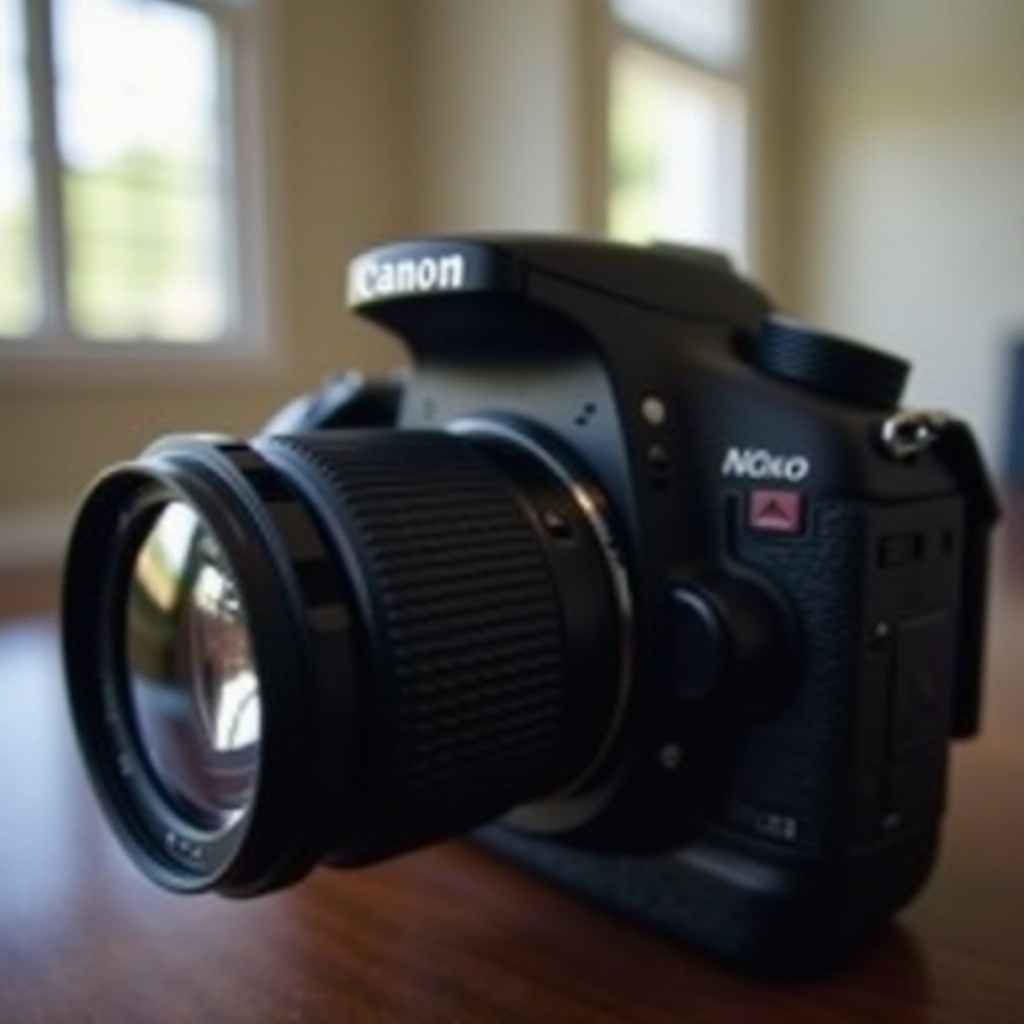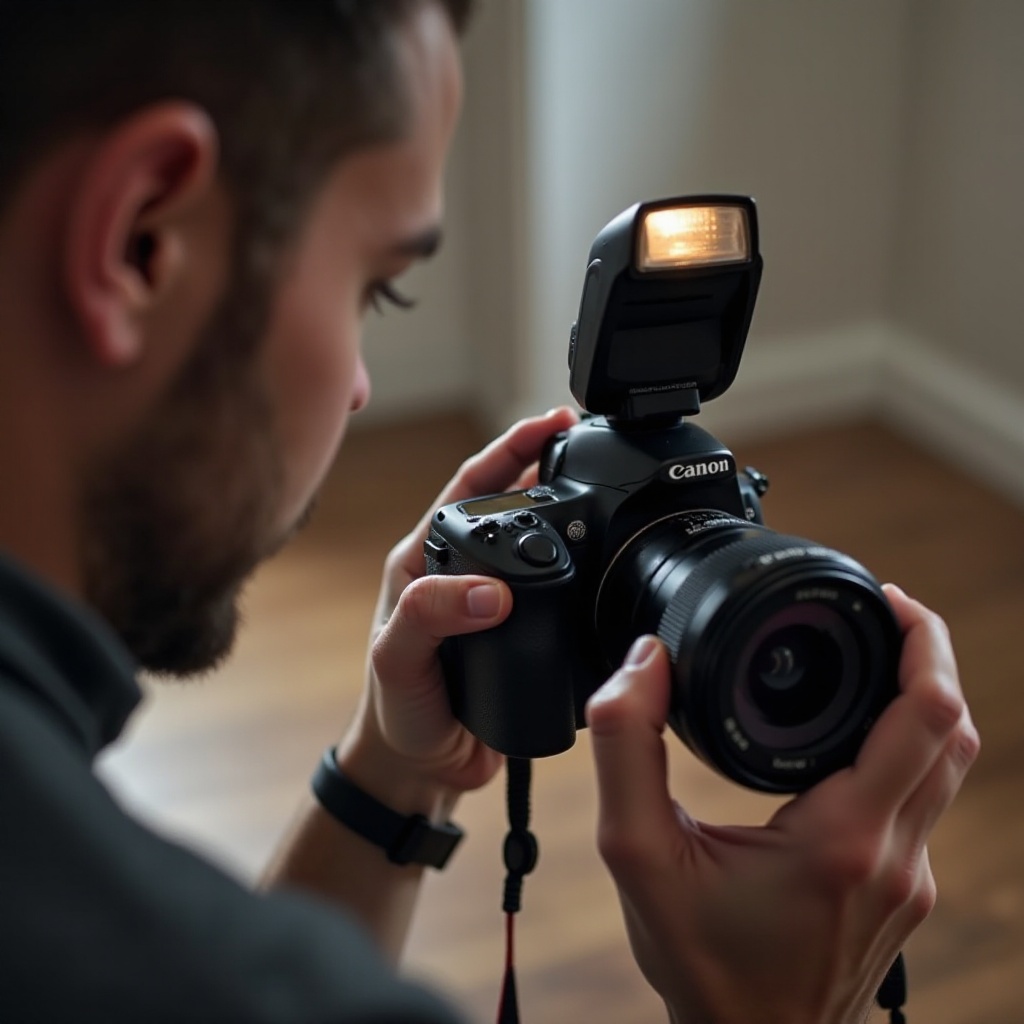Introduction
Capturing moments clearly and beautifully often requires the use of a camera flash. Whether you’re taking photos at a dimly lit event or capturing detailed close-ups, knowing how to turn on the flash on your camera is essential. This blog will provide you with a detailed guide across different types of cameras, best practices, troubleshooting tips, and creative techniques to maximize the use of your camera flash.

Understanding Camera Flash
The camera flash is a crucial element of photography that helps to illuminate scenes with inadequate natural lighting. The flash works by emitting a burst of light to brighten the subject and surrounding area, ensuring your photos are crisp and well-lit. Most modern cameras come with a built-in flash, and many even support external flash units for more advanced lighting options. Understanding when and how to use the flash can significantly enhance your photographic results. For those new to photography, the decision to use flash can be daunting. However, having a basic grasp of your camera’s flash capabilities and settings will empower you to make better decisions. Learning the types of flash — such as fill flash, red-eye reduction, and slow sync flash — can also improve your expertise in different shooting scenarios.

Turning On the Flash on Different Cameras
Different types of cameras come with different methods for activating the flash. Below are step-by-step instructions tailored for various types of popular cameras.
DSLR Cameras
Turning on the flash on DSLR cameras involves a few straightforward steps: 1. Turn on your DSLR camera. 2. Set your camera mode to ‘Auto’ or any other shooting mode that allows flash. 3. Locate the flash button, usually marked with a lightning bolt icon, and press it. The built-in flash should pop up. 4. To manually control the flash settings, navigate to your camera’s menu and select your preferred flash mode (e.g., TTL, Manual).
Mirrorless Cameras
Enabling the flash on mirrorless cameras can vary slightly by brand: 1. Power on your mirrorless camera. 2. Set the mode dial to ‘Auto’ or any flash-allowed setting. 3. Press the flash button typically located near the viewfinder. Some models require selecting a flash option from the menu instead. 4. Use the settings menu to fine-tune the flash mode according to your needs.
Point-and-Shoot Cameras
Point-and-shoot cameras generally provide a more straightforward interface: 1. Turn on your point-and-shoot camera. 2. Select a mode that supports flash. This is often done via a mode dial or touch screen. 3. Press the flash button (lightning bolt icon) until you see the desired flash icon on the screen (Auto, On, Off, etc.). 4. The flash will activate automatically in low-light conditions if set to Auto.
Smartphone Cameras
Smartphone cameras have made significant strides in flash technology: 1. Open your camera app. 2. Tap on the flash icon, typically found at the top of the screen. 3. Choose the flash mode you desire — Auto, On, or Off. 4. Some smartphones offer a ‘torch’ mode, providing continuous light for better video capture. Transitioning from understanding the fundamental use of flash and turning it on across various devices, it’s crucial to employ best practices. These practices help avoid common errors and ensure that your photos always look their best.
Best Practices for Using Flash
While using flash can enhance your photos, it’s essential to follow best practices to avoid common pitfalls: – Avoid using flash on reflective surfaces, as it can cause glare and unwanted highlights. – Use diffusers to soften the light and avoid harsh shadows. – Adjust your angle to minimize red-eye and overexposure. – Balance natural and artificial light using settings like fill flash. – For portraits, consider bouncing the flash off the walls or ceiling for a more natural illumination. In summary, understanding the optimal scenarios and methods for using your camera’s flash can drastically improve the quality of your images. Despite following best practices, certain flash-related issues may still arise. Learning to troubleshoot these problems will help you maintain the quality of your photos consistently.

Troubleshooting Common Flash Issues
Even experienced photographers encounter flash issues occasionally. Here are some common problems and solutions: – Flash not firing: Ensure the flash is charged or the batteries are not depleted. Double-check that flash activation is set correctly in the camera settings. – Red-eye effect: Enable red-eye reduction if available or adjust the angle and distance between the camera and subject. – Overexposed photos: Decrease the flash output power or use a diffuser to soften the light. By recognizing and troubleshooting these issues promptly, you can ensure better quality photos with every click. After mastering the basics and troubleshooting common issues, you might want to dive into advanced flash techniques. These techniques can elevate your photography to the next level by adding unique and creative touches to your images.
Advanced Techniques for Creative Flash Photography
Once comfortable with basic flash usage, you might want to explore advanced techniques to add a creative touch to your photography: – Off-Camera Flash: Utilize wireless triggers to detach the flash from the camera, allowing for dynamic lighting setups. – High-Speed Sync: Capture fast-moving subjects effectively by syncing the flash with higher shutter speeds. – Slow Sync Flash: Combine flash with a slow shutter to create striking motion blur effects around well-lit subjects. – Gel Filters: Use colored gels over your flash to add creative color effects to both the subject and background. Experimenting with these techniques can dramatically enhance the artistic quality of your photos.
Conclusion
Knowing how to turn on and utilize the flash on your camera can open up a world of photographic possibilities. Whether you’re using a DSLR, mirrorless, point-and-shoot, or smartphone camera, mastering flash settings can significantly improve your photography skills.
Frequently Asked Questions
Why is my camera flash not working?
Ensure that the flash is enabled in your camera settings and that the battery is charged. Also, check if the flash mode set is compatible with the shooting environment.
How can I avoid red-eye in my photos?
To reduce red-eye, use the red-eye reduction feature if available, increase ambient light, or try to position the flash away from the direct line of sight to the eyes.
Can I use an external flash on my smartphone?
Yes, you can use external flash units for smartphones. These often connect via Bluetooth or headphone jack and provide enhanced lighting options for mobile photography.